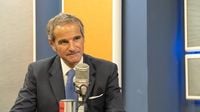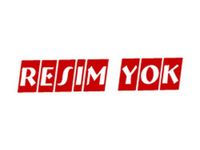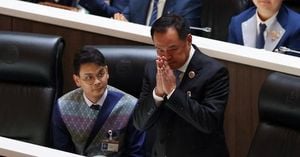The world is once again on edge as nuclear anxieties make a dramatic return to the global stage. On September 5, 2025, Rafael Mariano Grossi, Director General of the International Atomic Energy Agency (IAEA), sounded an urgent alarm following his private audience with Pope Leo XIV at the Vatican. His warning was stark: instead of moving towards a safer, disarmed future, the world is witnessing a troubling surge in nuclear armament and proliferation talk. Countries are not only enhancing their existing nuclear arsenals, but even those without nuclear capabilities are openly considering whether acquiring such weapons has become a grim necessity.
Grossi’s meeting with Pope Leo XIV was more than a ceremonial exchange. According to Vatican News, the Pope reiterated his long-standing appeals for what he called an “unarmed and disarming peace”—a vision that Grossi said resonates deeply with the IAEA’s mission. “I think it is quite revealing that the Pope uttered these words right at the beginning, from the start. And I think he was right in doing that because that is maybe the biggest challenge of our time,” Grossi reflected. For him, the stakes could not be higher: “Without this ‘unarmed and disarming’ peace, we're not going to see the next day.”
Grossi’s remarks, reported by Anadolu Agency and Vatican News, painted a sobering picture of the current nuclear landscape. “I think what we are seeing in general is that there is an increase in nuclear armament as opposed to disarmament. So countries are improving and increasing their nuclear arsenals,” he stated. This is not just a matter of the usual nuclear powers upgrading their stockpiles—although that’s certainly happening. Perhaps more alarmingly, Grossi noted, “countries that do not have nuclear weapons are starting to talk more and more openly about the possibility and perhaps the ‘necessity’ of having nuclear weapons.”
This shift in tone is not limited to one region. Grossi emphasized that “many countries, including important countries in the West or in the extended West, in Asia, are saying, well, maybe seeing what we see, perhaps having nuclear weapons at the end of the day would be the necessary thing. And this is what we need to stop.” For the IAEA chief, stemming this trend is “crucial.” He described it as “perhaps the biggest challenge in terms of nuclear weapon and disarmament these days.”
The context for these anxieties is complex. Grossi pointed out that the world once made progress in arms control, especially during the late Cold War era. Treaties like the Strategic Arms Reduction Treaty (START) between the United States and the Soviet Union represented a real, if imperfect, step toward limiting nuclear arsenals. “All this arms control—it was not disarmament per se—but the arms control limitations had some successes in the 1980s, in the 1990s even, that process stopped, and there is this reversal,” Grossi observed. Now, with security alliances appearing more fragmented and trust eroding, the hope for a return to those days seems distant. Still, he expressed a glimmer of optimism, noting that recent dialogue between Russia and the United States at the Alaska summit, where the issue was at least broached, could be a starting point for renewed progress—if only modest steps for now.
But as Grossi made clear, the threat is not just theoretical or strategic. The dangers of nuclear technology are playing out, day by day, on the battlefields of Ukraine. The Zaporizhzhia Nuclear Power Plant, Europe’s largest, remains at the very heart of the crisis. “When one looks at the map, one sees that this nuclear power plant is right on the frontline. So the possibility of something happening is extremely high,” Grossi told Vatican News. The plant has endured almost daily shelling, drone incursions, and, most worryingly, nine separate blackouts that have compromised its cooling systems. “Contrary to what people perhaps think, military activity is increasing. It's not decreasing,” Grossi warned. As both sides in the conflict seek to strengthen their positions ahead of any possible negotiations, the risk of a catastrophic accident grows “geometrically.”
The IAEA is not standing by idly. Grossi described how his agency is working on multiple fronts: “We're trying to do this in the Middle East, in Iran. We're trying to do this in Ukraine, Russia, in Zaporizhzhia. We're trying to do this in China and Japan, everywhere where the nuclear activity has led... we need to be there to ensure non-proliferation or the safe use of nuclear technology.” Inspectors and experts are on the ground at Zaporizhzhia, interacting with plant management and decision makers on both sides of the conflict. The aim, in Grossi’s words, is “to get to the end of this without a major disaster.”
The broader trend, however, is deeply concerning. “There is this impression that we are inevitably in a toboggan towards more nuclear weapons, more proliferation, and perhaps nuclear weapons use,” Grossi said. The IAEA chief’s concern is not only about the hardware—the bombs and missiles—but also the psychology of the moment. As nations question the reliability of old security guarantees and see alliances fraying, the temptation to pursue nuclear arms grows. “All of this is in a state of flux,” he remarked. The world, it seems, is at a crossroads: either find a way back to arms control and a culture of restraint, or risk sliding into a new era of nuclear uncertainty.
For many experts, the situation at Zaporizhzhia is a microcosm of the larger challenge. The plant’s precarious position—subject to shelling, blackouts, and escalating military activity—serves as a daily reminder of how quickly things can spiral out of control. “It hasn't happened that it can't,” Grossi cautioned, underscoring that just because disaster has been averted so far does not mean the danger has passed. In fact, he argued, the risk is only growing as the conflict drags on and military engagement intensifies.
Grossi’s message, delivered with the gravitas of someone who has witnessed the world’s nuclear perils up close, was clear: the world must act now to reverse the tide. Whether through renewed arms control dialogues, concrete steps toward disarmament, or simply a renewed commitment to the principles of non-proliferation, the international community faces a choice. As the IAEA chief put it, “There must be [a reversal]. There must be one.” The alternative—a world where more countries possess nuclear weapons and the risk of their use grows ever more real—is simply too dangerous to contemplate.
The warning from the Vatican is not just for diplomats and generals. It’s for all of us. As nuclear anxieties rise once more, the choices made in the coming months and years will shape the safety of generations to come. The time for complacency, as Grossi and Pope Leo XIV made clear, is long past.





